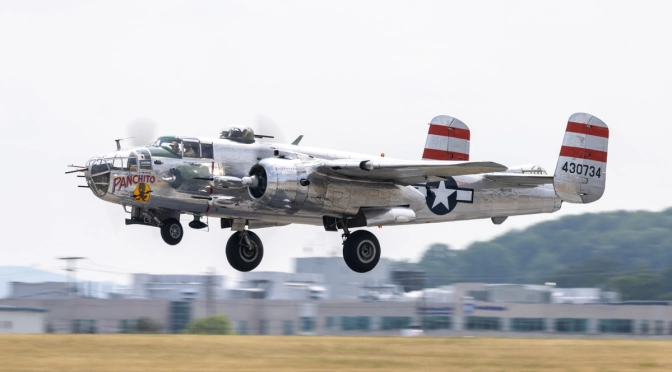The 32nd Annual World War II Weekend was held on June 2nd through 4th at the Mid-Atlantic Air Museum located in Reading, PA. This event continues to bring the WWII community together with a gathering of warbird aircraft, military vehicles and reenactors. Although there is an emphasis on the military, the “war on the Homefront” is also well represented with reenactors of those services that continued while the soldiers and sailors away serving. This includes the radio performers, singers, musicians and even retail that continued despite the war efforts.
This year’s airshow was “plagued” by maintenance gremlins on several of the featured aircraft along with some low ceilings. Weather also prevented several aircraft from flying in. Despite these challenges, the show continued to the best of their ability and provided quality entertainment both on the ground and in the sky.
Training and Liaison Aircraft
The airshow portion of the show traditionally begins with a gradual progression of trainer aircraft, just like a pilot of the time would do in training. Basic training (BT), primary training (PT) and advanced training (AT) were all represented in the initial show passes.
The aerial parade then progressed to the Liaison aircraft. These aircraft were the small planes used throughout the world by the Allied forces to observe the front lines, spot for artillery or even transport a VIP.


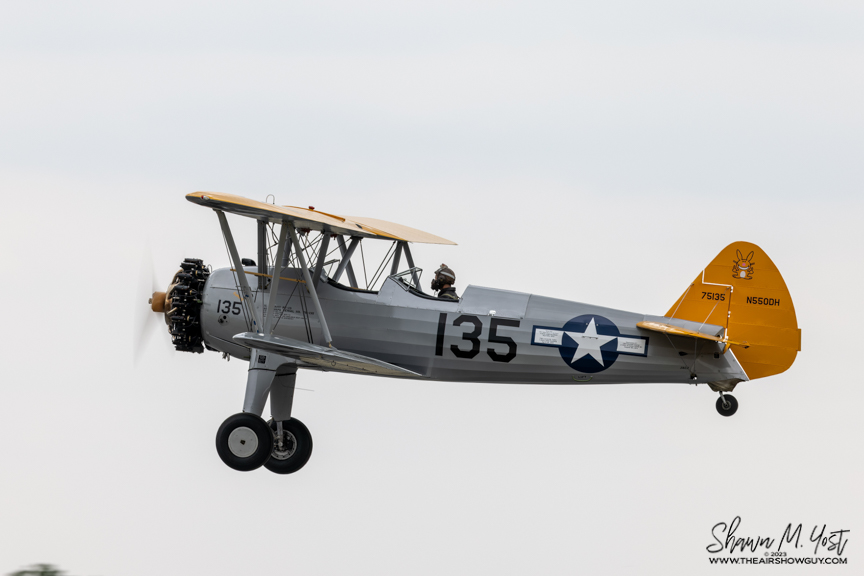








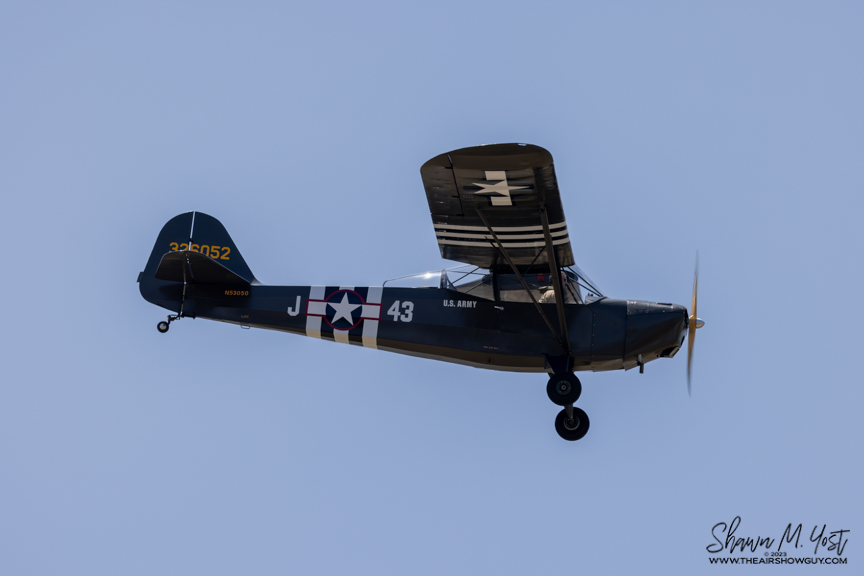



Transports
Transports were represented by the C-47 Skytrain and C-45 Expeditor. General Eisenhower once said the the C-47 was one of the four most important Allied weapons of the war. The Skytrain was vital to the war effort serving as a transport of both soldiers and equipment. It also served as a glider tug, air ambulance and eventually a gunship nearly 20 years later in Vietnam. The C-47 was nicknamed the “Gooney Bird” due to its ungainly looks and slow speeds, but it served fantastically in nearly every theatre of operations. The airframe was based on the Douglas DC-3, primarily used as an airliner.
C-47 Skytrains
Hairless Joe
“Hairless Joe” is a C-47 owned and operated by the Yankee Air Museum in Michigan. It is painted to represent the airframe flown by Lt. Richard Cole while serving in the China/Burma/India theater. Read about my flight in this aircraft by clicking here!





Placid Lassie
Placid Lassie is owned and operated by the Tunison Foundation. She was built in 1943 in Long Beach, California. She is a veteran of WWII, having served in Operation Neptune (D-Day), Operation Market Garden (Liberation of Holland), Operation Repulse (Battle of the Bulge), and Operation Varsity (Invasion of Germany). The aircraft paint scheme is authentic to the airframe.



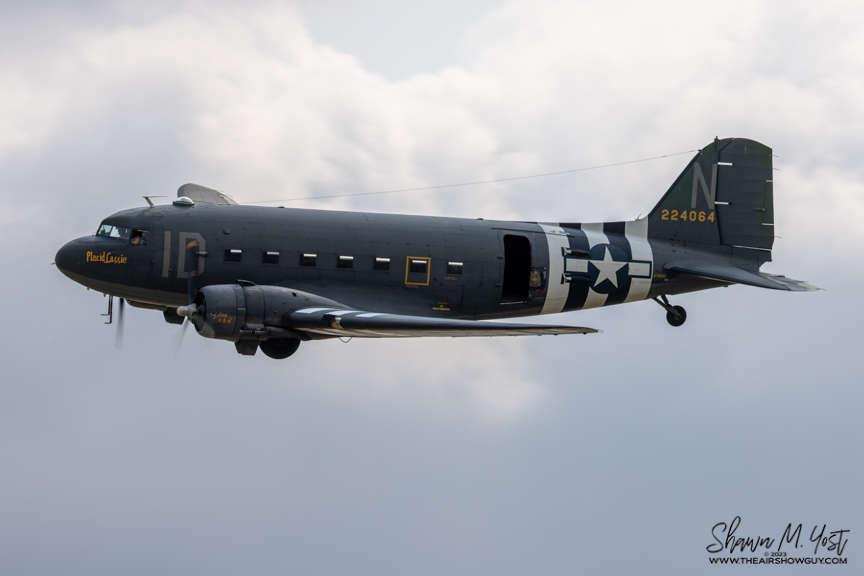




C-45 Expeditor
Like the C-47, the C-45 was based on a civilian design prior to being pressed into military service. The airframe is based on the Beechcraft Model 18. The cargo variant, as pictured in the photos, was used as a light cargo transport, VIP aircraft and some liaison work. The type also served in several other variations as a trainer for bombardiers and gunners (with a different designation and name). The type was in production from 1939 through 1970 and were widely used in the civilian market for many years.

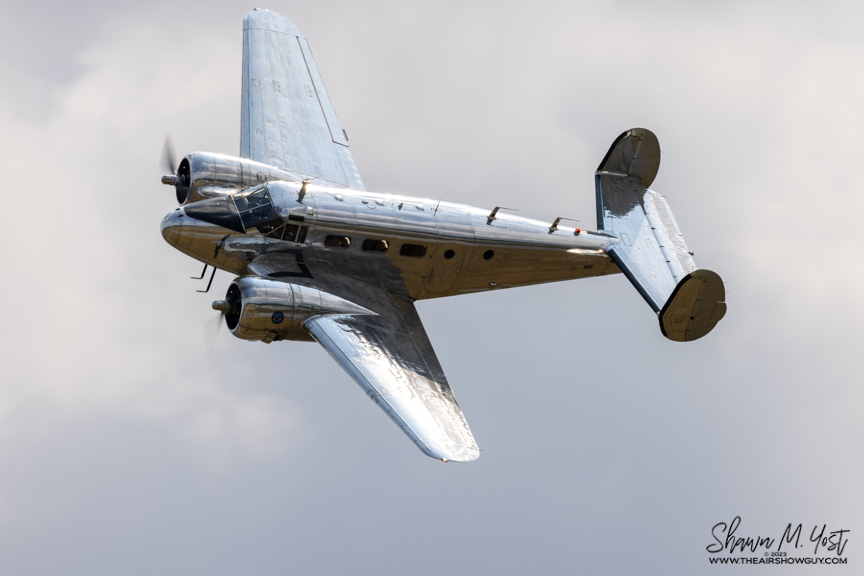

Light and Medium Bombers
The smaller bombers were represented by three aircraft, the SBD Dauntless, a naval dive bomber and two B-25 Mitchells.
Dauntless
The Dauntless’ contribution to World War II cannot be simply overlooked. It was the primary naval attack aircraft until late in the war, serving on the aircraft carrier decks in the South Pacific along with land based squadrons of the Navy, Marine and Army. Although nicknamed “Slow But Deadly” the type was a titan on the battlefield, with major contributions at the Battles of Midway and Guadalcanal. The type was in production from 1940 through 1944, and was eventually replaced by the Curtiss SB2C Helldiver on the decks of American aircraft carriers.




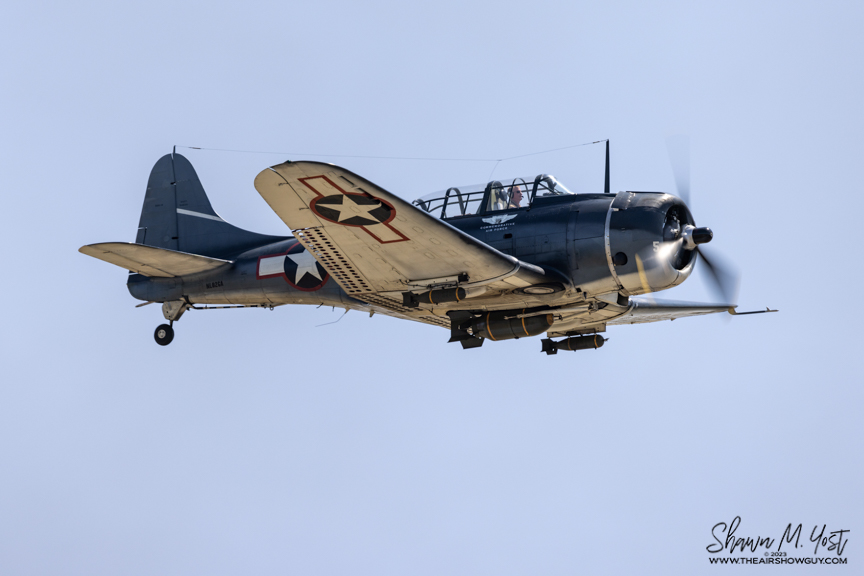
B-25 Mitchell
Although there were several medium sized bombers in use during the war, a variant of the Mitchell was in every theatre of operations. Mitchells were used as a bomber and eventually versions were converted into gunships for low-level strafing missions.
Two flying B-25s were present this year, with a third on display. The first is Delaware Air Museum‘s “Panchito”. Their Mitchell is a “J” model, and wears the name of the original aircraft assigned to the 41st Bomb Group in Okinawa. The unit would become the first to raid Japan with B-25s since the famous Doolittle Raid of 1942. Once the war ended, the original “Panchito” aircraft was reclaimed on July 13, 1949. The current aircraft began the post-war life as an aerial firefighter. She has passed through several owners since then, but the “Panchito” markings remain as a salute to those veterans to whom we consider “The Greatest Generation.”
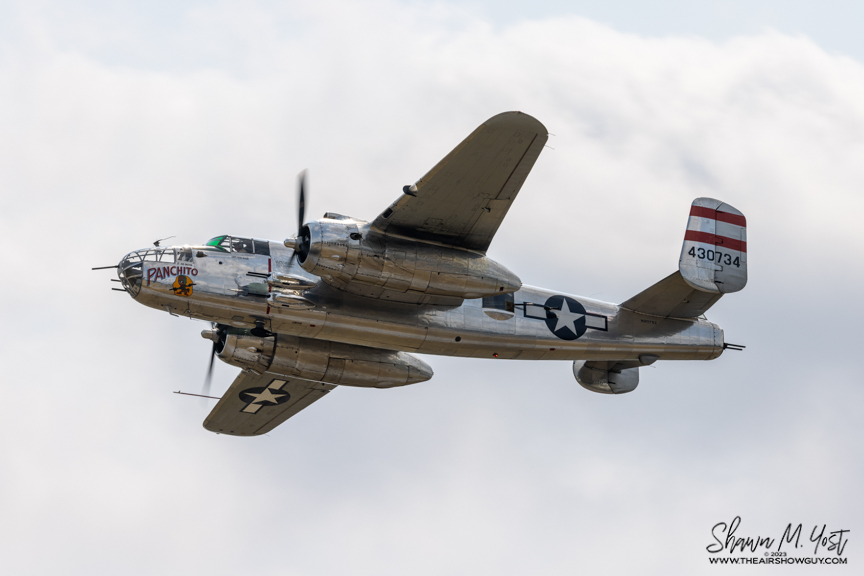



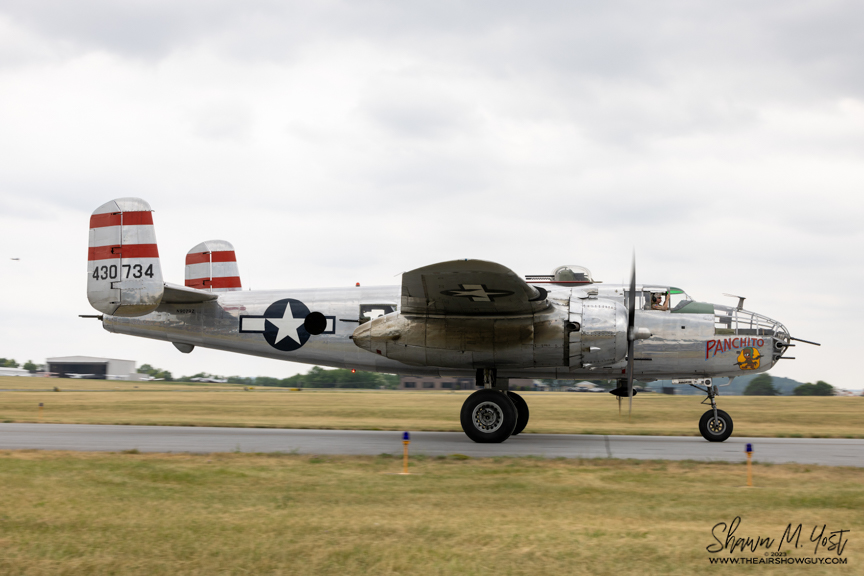
The second flying Mitchell was Tom Duffy’s “Take-Off Time”, which is also a “J” model with a natural aluminum finish.


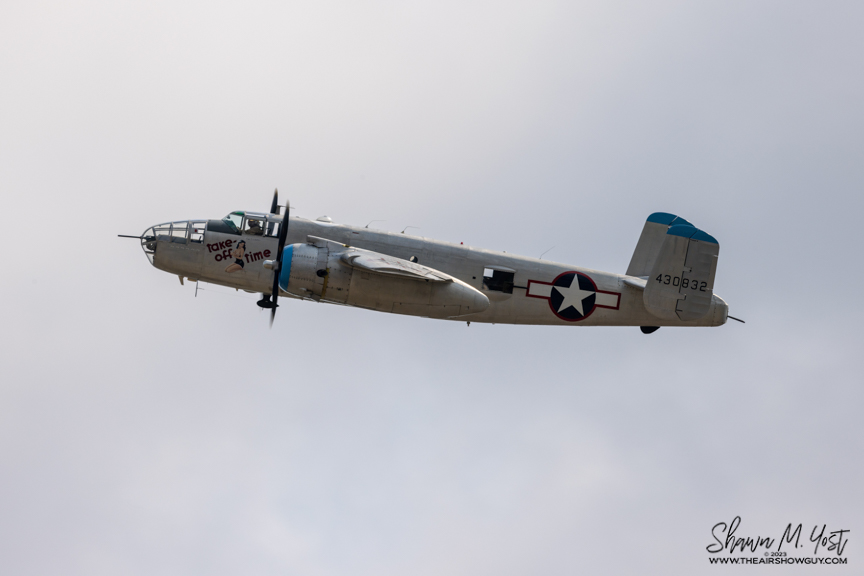

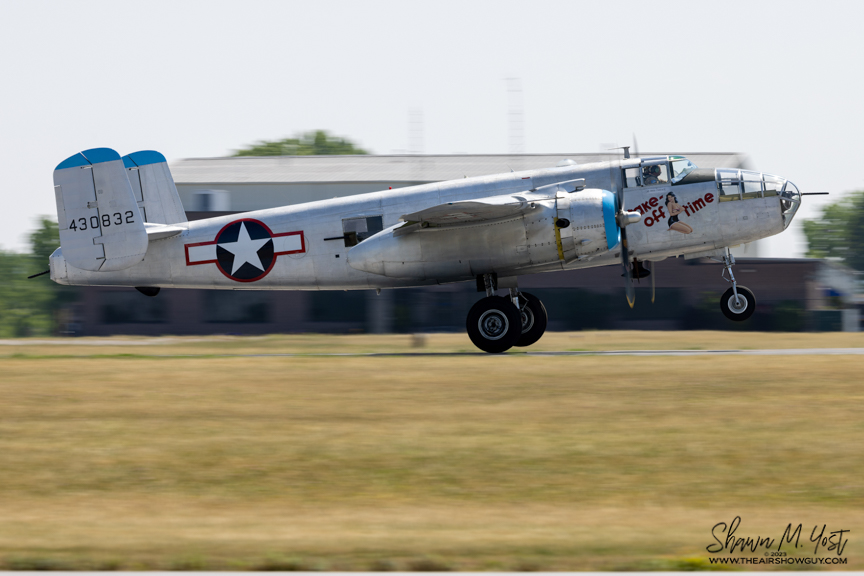
The Fighters
Four types of fighter aircraft were present at this year’s show. Two naval fighters and two Army fighters.
FG-1D/F4U Corsair
The Commemorative Air Force Airbase Georgia brought several fighters, including their Corsair. Their airframe did not see combat but did serve the Navy until 1956. The mighty Corsair has served the CAF since around 1960 and wears the markings of VMF-312 “Checkerboards”.



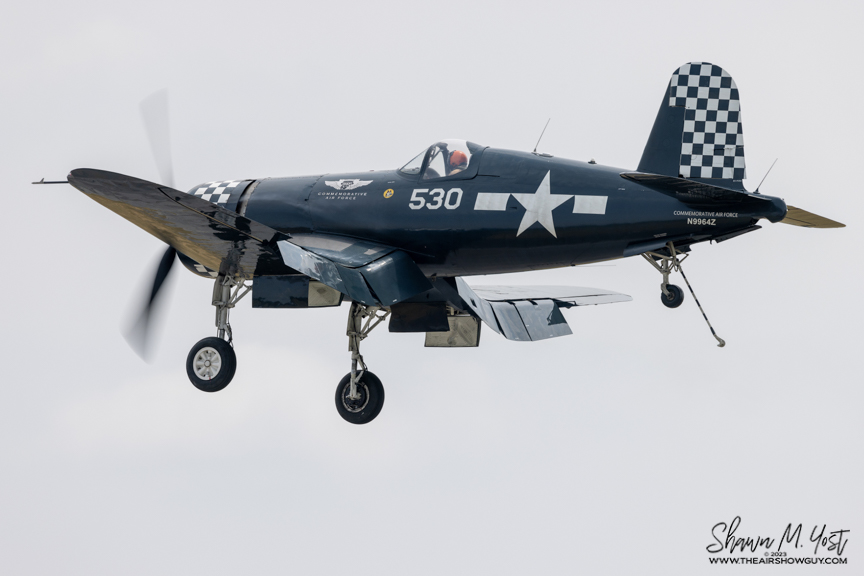
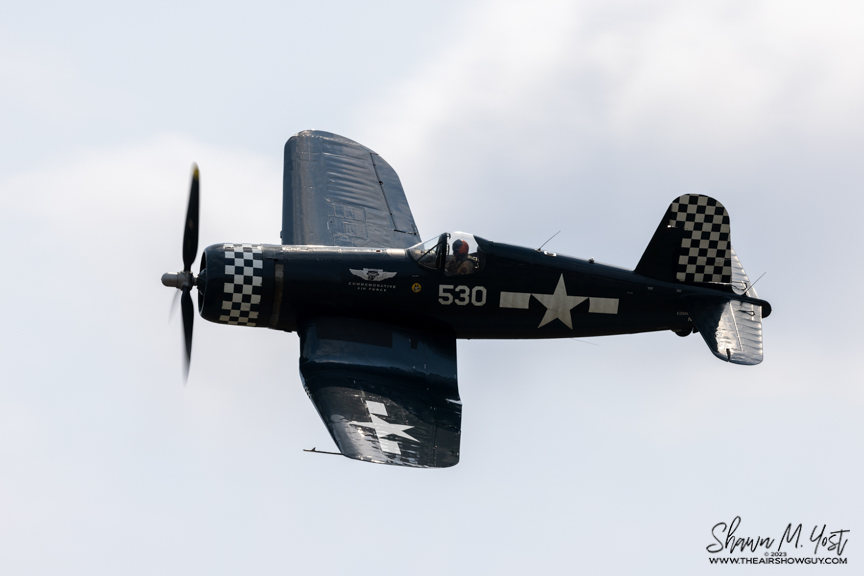



P-63 King Cobra
One of the Army aircraft was the P-63 King Cobra. Although similar in appearance to the P-39 Airacobra, the King Cobra is a completely new design. The performance is similar to the more famous P-51 Mustang, but since the Mustang and other fighters were in full production, many of the King Cobras were exported to the Soviet Union. Commemorative Air Force Airbase Georgia also operates this aircraft. After many years, she returned to flight in 2017 after an extensive restoration process. The markings are authentic to the airframe, as it served as a test aircraft for several years at the Ames Research Center.



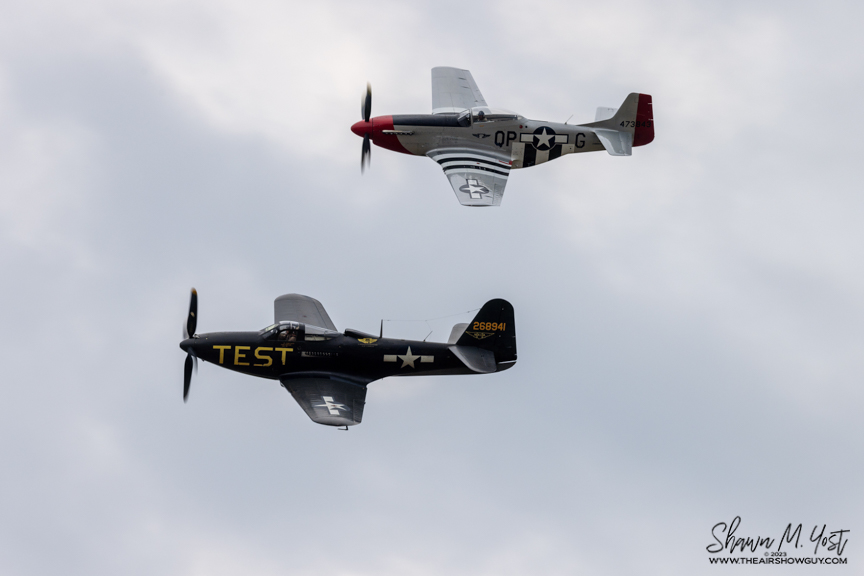
FM-2/F4F Wildcat
Like the earlier mentioned SBD Dauntless, the Wildcat’s legacy cannot be overlooked. It was America’s front line naval fighter at the beginning of World War II. At the time, the Japanese Zero fighter was thought to be vastly superior to the Wildcat. However, once the Naval Aviators gained some experience, the small Grumman built fighter began to hold its own and even held some advantages over the Zero. The type served its purpose, holding the line of defense until 1943 while the Grumman F6F Hellcat and Chance-Vought F4U Corsair fighters were developed and deployed. Although the Hellcats and Corsairs eventually replaced the Wildcat, the type continued to serve on the smaller escort carriers as a fighter aircraft, U-Boat submarine suppression and scout plane.
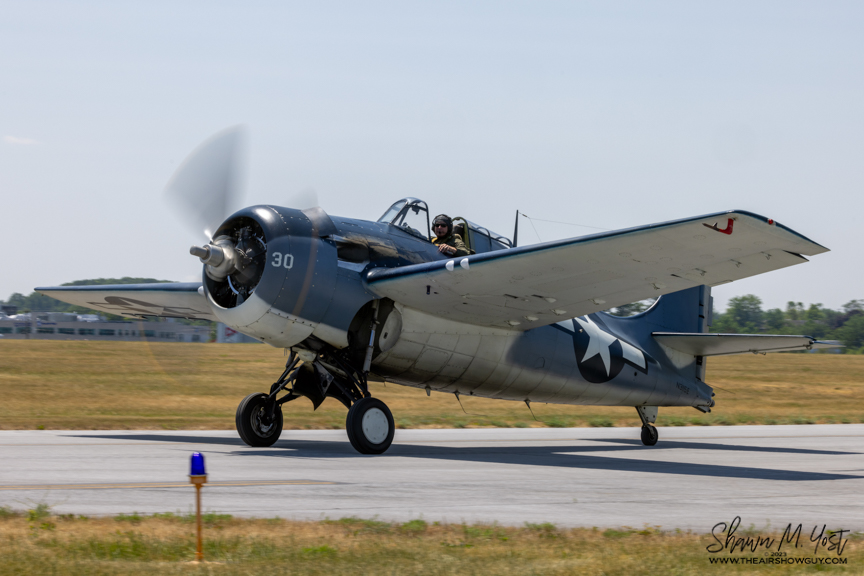



The Wildcat flying is a General Motors built FM-2 variant owned and operated by the Military Aviation Museum in Pungo, Virginia. Built in 1944 in Linden, New Jersey, the aircraft was assigned to the South Pacific for a short time before the airframe was returned stateside to San Diego. Eventually, the airframe was transferred to NAAS Pungo in 1945, which is just several miles from where the museum now sits.
P-51D Mustang
Mustangs were represented by two airframes. The CAF Airbase Georgia’s Mustang called “Red Nose” was flying frequently throughout the weekend on paid passenger rides. Red Nose was one of the original CAF aircraft having been acquired by one of the founders in 1957. She officially became CAF property in 1977, and has been flying since nearly ever since. Like all warbirds, she has had to take some time off periodically for for maintenance and restoration work. The markings are those of the 8th AF, 4th Fighter Group, 334th Fighter Squadron around 1945.

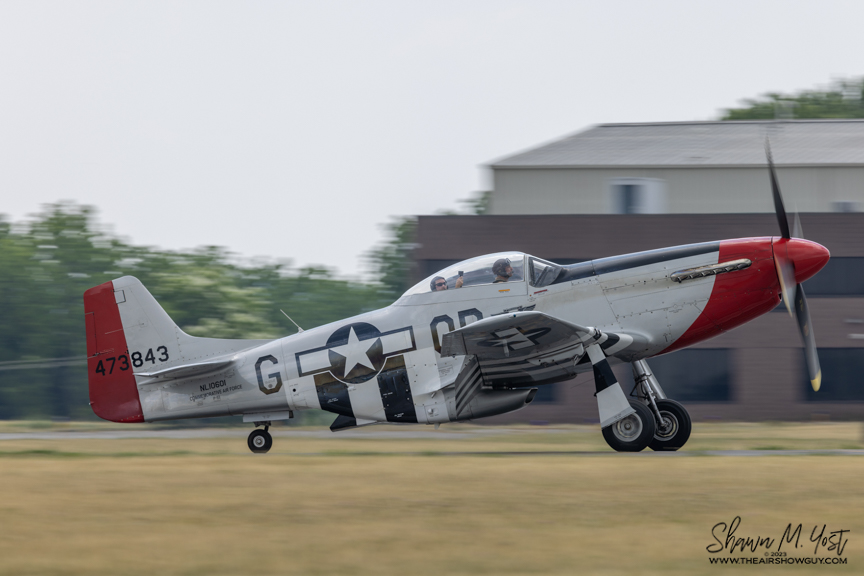
The other Mustang flying was “Kwitcherbitchen” owned by Tom Duffy. The markings represent the 506th Fighter Group, 457th Fighter Squadron, based on Iwo Jima around mid-year 1945. I believe the markings are specific to Capt. William B. Lawrence, Jr. who downed a Japanese fighter on July 16, 1945, hence the single Japanese kill marking on the fuselage.





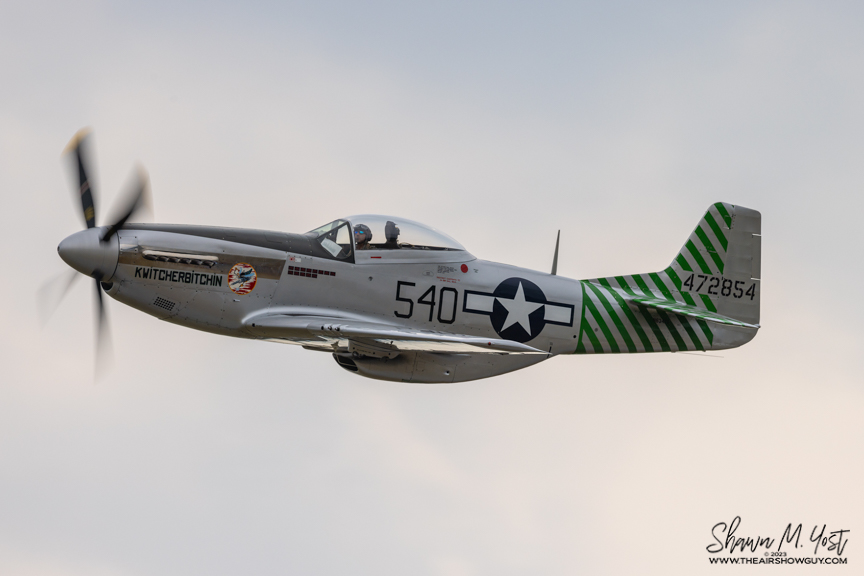
Heavy Bombers
A heavy bomber is defined as a four-engined bomber in World War II. There were three types scheduled to appear, a B-29 Superfortress, a B-24 Liberator, and a B-17 Flying Fortress. The B-29 and B-24 arrived, but a maintenance issue kept the B-24 on the ground all weekend, and prevented it from taking passengers. The B-17 did not make the trip, as all B-17 airframes were temporarily grounded to inspect the wing spars.
B-29 Superfortress “FiFi”
Commemorative Airforce’s flagship is the B-29 Superfortress “FiFi”. She is part of the B29-B24 Squadron of the CAF and is one of only two flying B-29s left in the world. Acquired in 1970, FiFi is configured as an early Superfortress, with the numerous self-defense gun turrets in place. She was a regular flying participant up until 2006 when she was voluntarily grounded requiring new engines. After some extensive engine modifications were completed, she was restored to flight in 2010. The B-29 is always a highlight to see, especially given the rarity of the airframe type.

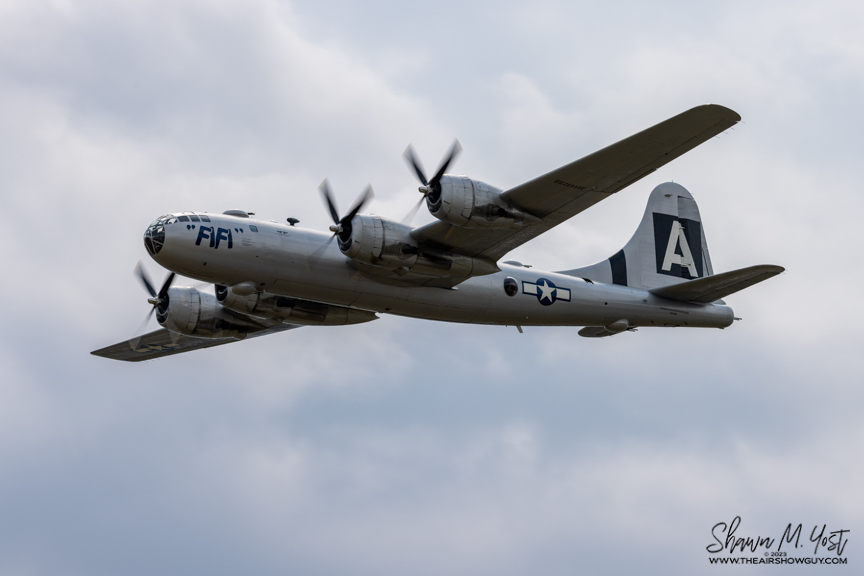








Around the field…

P-61 Black Widow Restoration Progress
The restoration of the P-61 Black Widow continues to progress. While it may seem slow to the casual observer, the airframe showed progress over the last several visits, including the mounting of the top turret into the airframe. Arguably, this project may be the mostly highly anticipated warbird restoration currently in the process. However, there continues to be a number of skeptics citing the work quality, long process and cost of operation (specifically insurance) considering the rarity of the type. Many of these “concerns” could be easily erased with substantial financial support and additional qualified staff. Until then, the work will continue on the pace that the current financial means can sustain. I for one am hoping that the project can get finalized soon and I can see the Black Widow airborne.



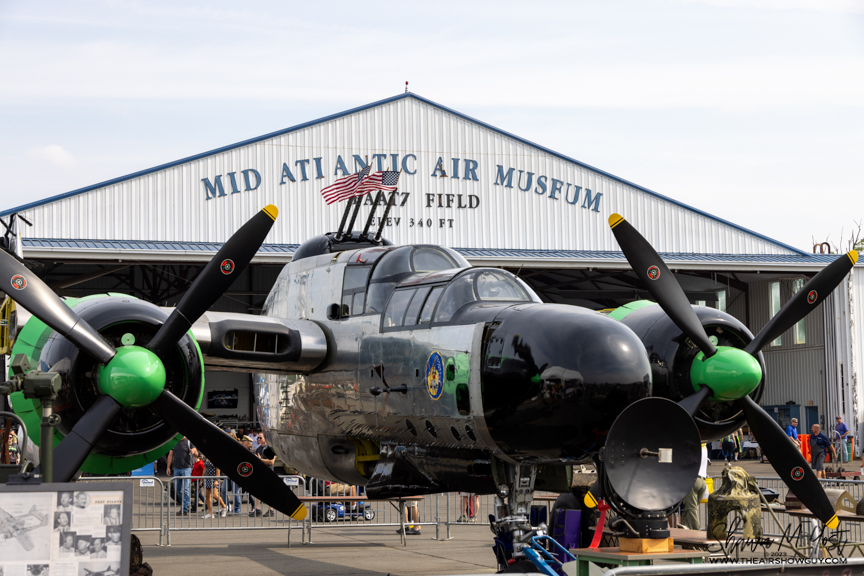

Life on the Home Front




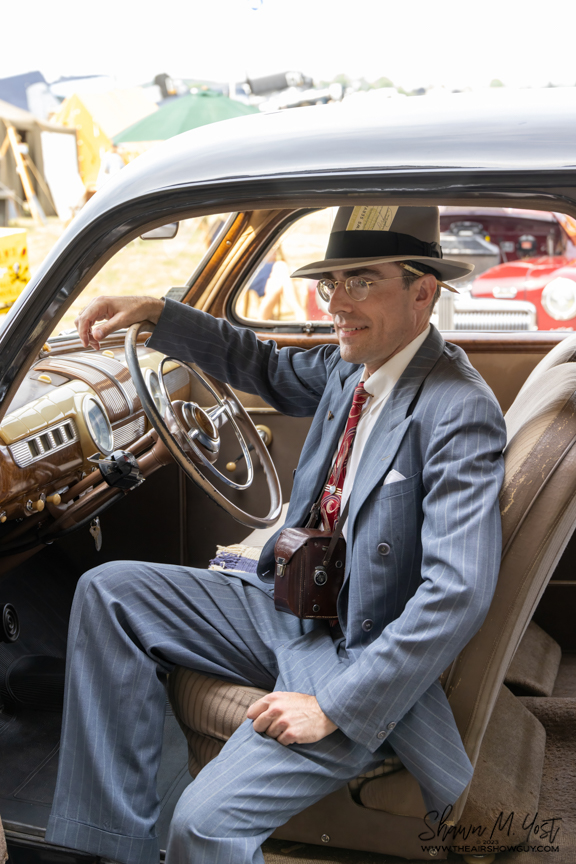

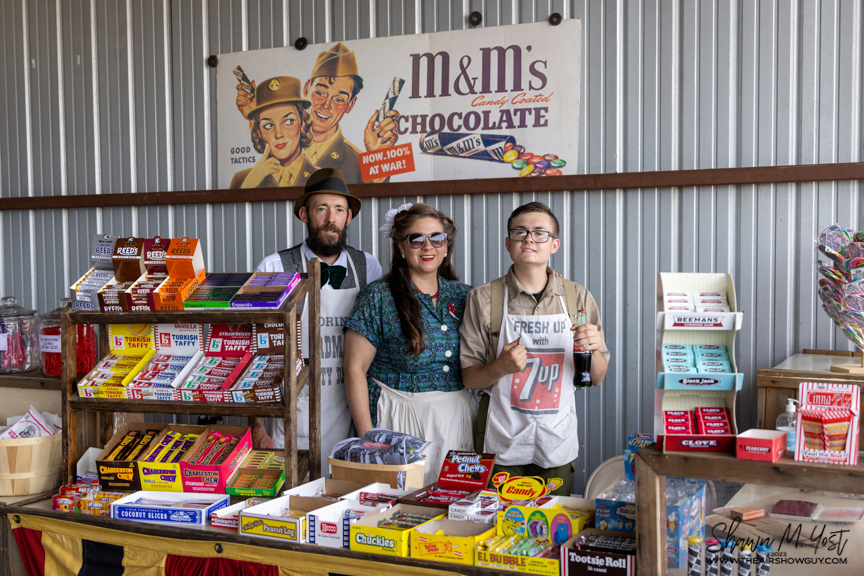
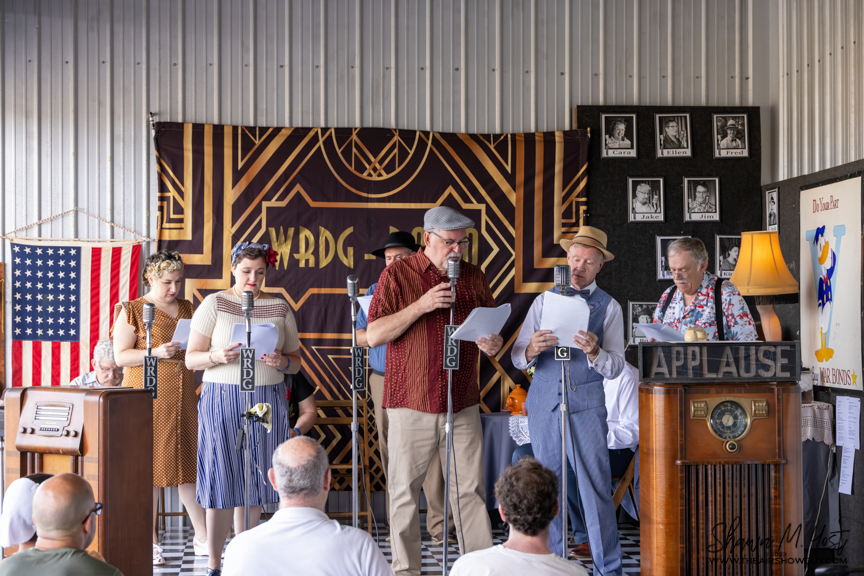

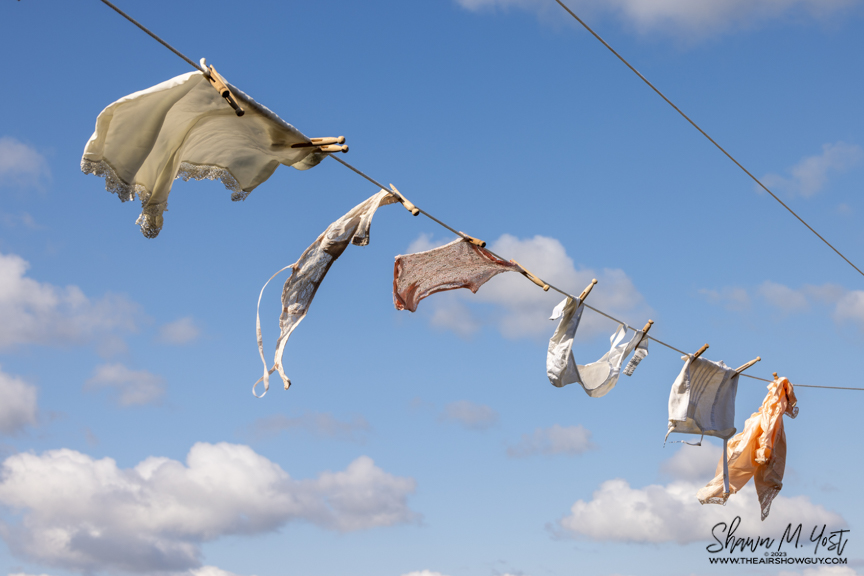
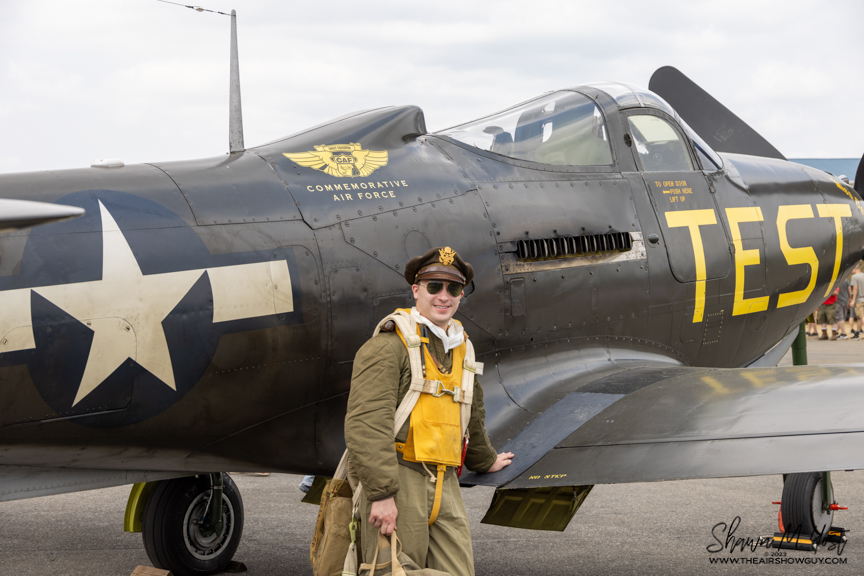
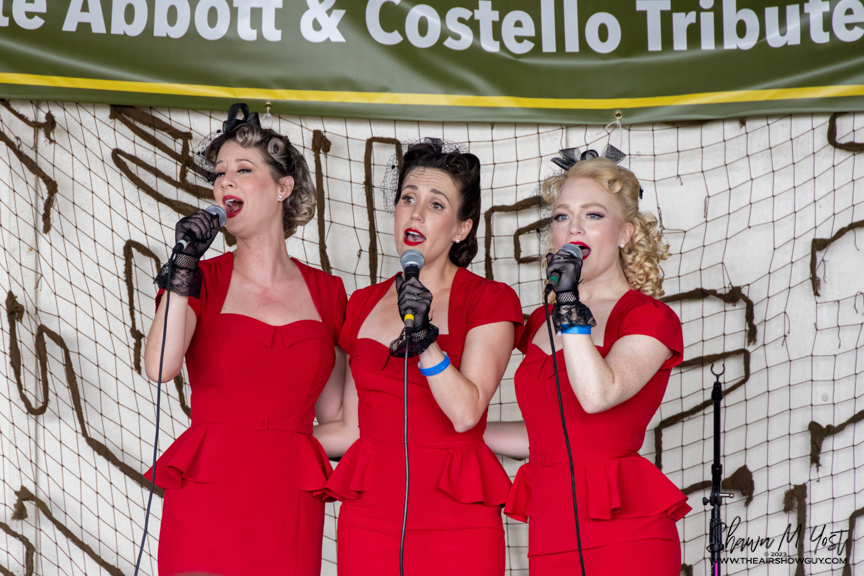





World War II Weekend was a great time despite the gremlins that tried to put a damper on the weekend. A huge thank you to the Mid-Atlantic Air Museum and the media coordinators, David & Christina Brown, for welcoming us to this great even. I am already eager to see the 2024 event.

